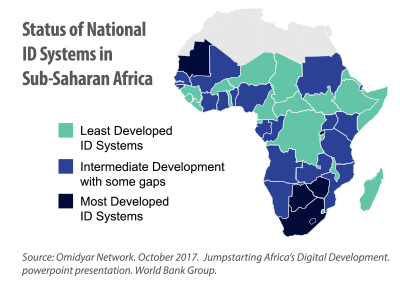 There are challenges on Africa’s path towards a digital future. One such challenge is the lack of formal/legal identity by African citizens. The World Bank estimates that nearly half the population of the continent are without a legal identity due to a poor Civil Registration and Vital Statistics (CRVS) system on the continent that has contributed to marginalization and exclusion of many. The lack of legal identity has been recognized by all as a barrier to inclusive development, hence the inclusion of “legal identity for all by 2030, including through birth registration” as one of the targets of the SDGs. The lack of identities implies that about half of the continent’s population are not only disempowered from meaningfully participating in the productive process to generate economic growth, but also are inhibited from accessing various services to improve their well-being. Citizens who do not have legal identity have difficulty asserting their rights, including their rights of citizenship.
There are challenges on Africa’s path towards a digital future. One such challenge is the lack of formal/legal identity by African citizens. The World Bank estimates that nearly half the population of the continent are without a legal identity due to a poor Civil Registration and Vital Statistics (CRVS) system on the continent that has contributed to marginalization and exclusion of many. The lack of legal identity has been recognized by all as a barrier to inclusive development, hence the inclusion of “legal identity for all by 2030, including through birth registration” as one of the targets of the SDGs. The lack of identities implies that about half of the continent’s population are not only disempowered from meaningfully participating in the productive process to generate economic growth, but also are inhibited from accessing various services to improve their well-being. Citizens who do not have legal identity have difficulty asserting their rights, including their rights of citizenship.
![]()
Despite the opportunities digitalization presents, there is more to be done to enable the main drivers of digitalization in Africa. Only a few African countries have made progress in developing digital ID systems as a basis for legal ID, and to exploit the digital economy. Further, after almost 25 years of ICT development on the continent, for many African countries ICT readiness (infrastructure & access), ICT use, and ICT capability (skills) is still low, but rising, per the trends in the International Telecommunications Union’s ICT Development Index. While mobile penetration was estimated at 44 % in 2017, internet penetration averages 20 percent, but with wide variations from 90% to 3%. Also, only 7% of African households subscribed to high speed internet services at the end of 2017.
